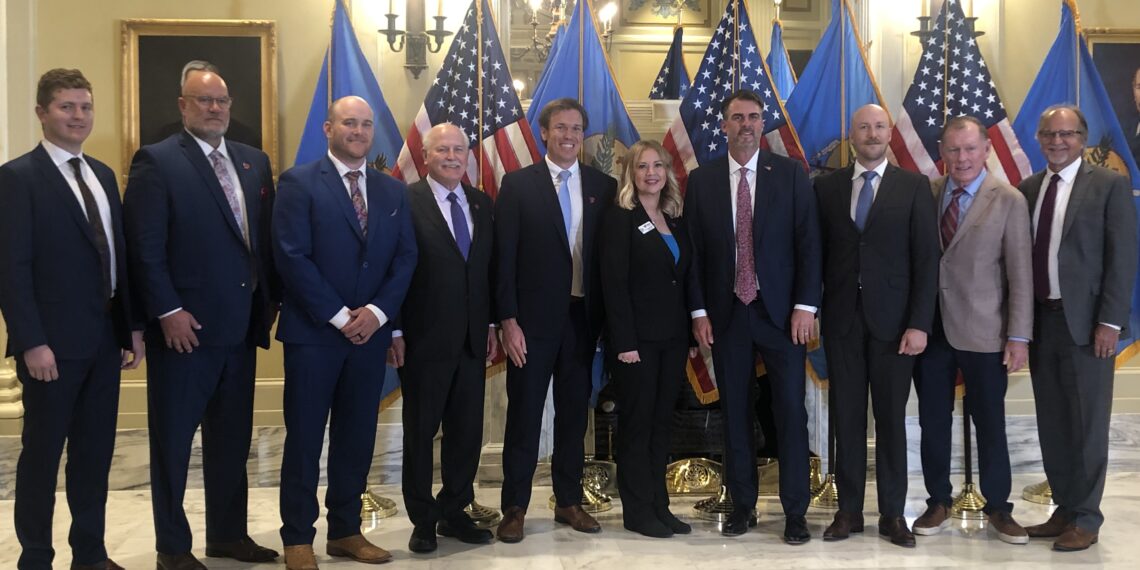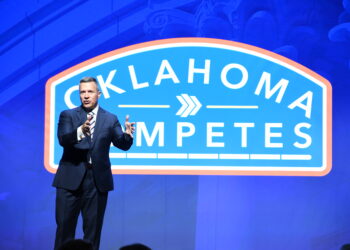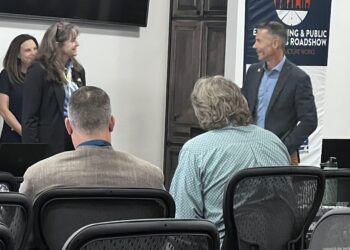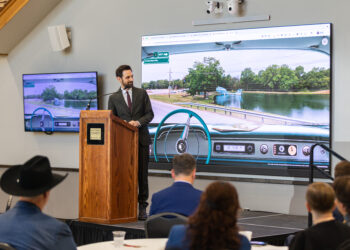LAWTON, Okla. (OBV) – Firehawk, an innovative Dallas-based company that uses 3D printing to create rocket motors, is building a manufacturing facility in Lawton, Okla.
Gov. Kevin Stitt was joined by two of Firehawk’s three co-founders, Steve and Will Edwards, Lawton Mayor Stan Booker and other officials during his weekly news conference to announce that Firehawk will invest $22 million in Oklahoma and create 100 jobs as part of the company’s planned 40,000-square-foot facility in Lawton.
“They make an innovate rocket fuel that can be developed more quickly and effectively. This is essential for our national defense,” Stitt said. “Oklahoma is quickly becoming a defense hub thanks to Lawton-Fort Sill, all of our military bases, all the work that we’ve been doing over the last few years to develop FISTA.”
FISTA is a private defense contractor network in Lawton. Stitt said it serves as incubator for new developments and products for the U.S. military.
“Businesses like Firehawk are coming to Oklahoma because they know that Oklahoma is the most business-friendly state. They love our permitting process, our workforce, and being so close to these military bases is fantastic,” Stitt said. “We feed the world with our great agricultural companies, we fuel the world with our oil and gas and we defend freedoms around the world.”
Will Edwards, who is a Tulsa native, said he and state and Lawton officials have been discussing Firehawk building a facility in Lawton for the past year. It will be the first scaled 3D-printed propellant factory in Oklahoma.
“We’ve created a way to produce a million pounds of propellant unbelievably cost-efficiently, incredibly fast,” Will Edwards said during the news conference.
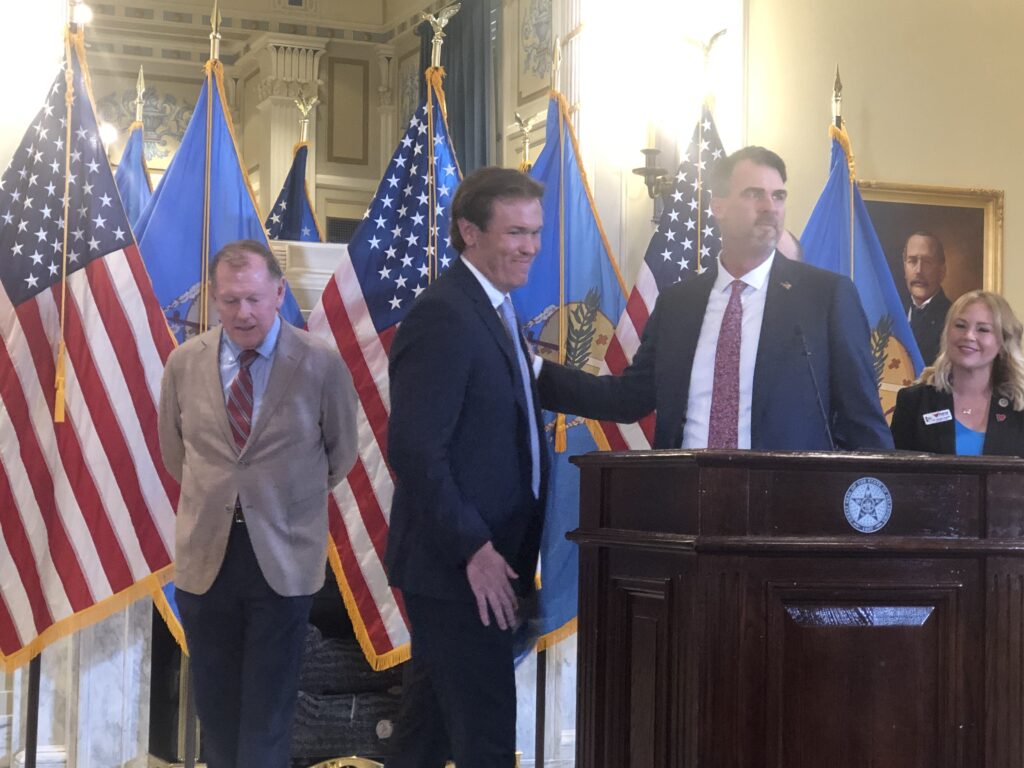
Will Edwards spoke with Oklahoma Business Voice after the news conference about what makes Firehawk’s 3D-printing process so unique and essential to the rocket propellant industry.
“The reason that’s important is because traditional methods of producing rocket propellant take about 15 to 60 days, and we’ve cut that down to six hours. It’s a time saver and an extreme cost saver,” Edwards said. “It’s important because the United States needs a lot of rocket motors. Propellants seem to be one of the big cruxes holding us back from producing at our needed capacities.”
Edwards described the traditional process for building rocket motors as difficult, dangerous and lengthy. He said it ultimately proves costly to U.S. manufacturing.
“In 24 months, the United States gave away roughly nine years of production capacity. It’ll take about nine years for us to rebuild what we gave away in 24 months,” he said. “One in four batches of rocket propellant tends to be bad. It’s just a dangerous, expensive process. You need $1 billion facility. You need that tucked away in the mountains. You need hundreds of people managing the propellant as it cures for several weeks. The fact that Firehawk can press a button and we can start printing propellant and it’s done at the end of that print — roughly three to six hours later — it’s an incredible innovation.”
FISTA, nearby military bases and the enthusiasm of city leadership made Lawton the ideal choice for the new facility, according to Edwards.
“We’re working on Army contracts now, and those systems that we are designing propellant for, producing motors for, they’re fired at Fort Sill. The fact that we can have a facility right next door to Fort Sill is just incredible, because it has all the talent we need to execute at scale,” he said.
Firehawk is also receiving a $4 million tax incentive from the state. Most of the funding will be through Department of Defense withholding taxes. It’s part of the PG program that has also been used to build hospitals, according to Rep. Trey Caldwell, chairman of the House Appropriations and Budget Committee.
Edwards said tens of millions of dollars will be invested into the new facility. He did not provide a specific figure.
The new facility will be located on 160 acres and employ 100 people by 2028, according to Edwards.
The facility will have several test cells, enabling the site to produce the thermoplastic-based propellant and immediately begin testing.
There is potential for the site to be increased by another 160 acres.
“Honestly, on that 320 acres we will probably invest more over time, build more facilities, increase production and grow our company. This is just the start,” Edwards said.









